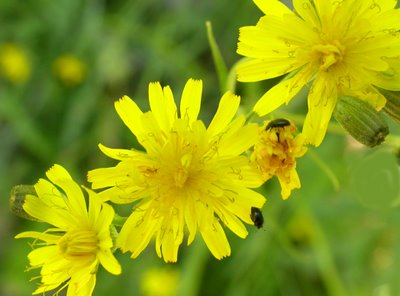
One of the most characteristic plants of M3, the smooth hawksbeard, is now flowering well and, if it is reasonably mild, it will continue into January. Like many composites (Asteraceae) the flowers of this widespread plant open in the morning and are usually closed by mid-afternoon whatever the weather.
The leaves are very bitter and, while they are sometimes used in salads in mainland Europe, they are eaten by very few animals and there are always many undamaged wintergreen plants. I have seen recipes for a country wine made from the flowers too (like dandelion wine), but I suspect there are far better options for the home wine-maker.
The plant is surprisingly polymorphic, some examples having quite deeply serrated leaves while others are almost smooth in outline. M3 has flowering plants over a metre tall and some less than 10cm. Mostly they are biennial, but some plants appear in spring and flower by late summer.
The flowers at this time of year are usually crowded with the small, black Meligethes beetles shown in the picture, but so far in 2006 they have been rather scarce. I am trying to find out if this fall in number is widespread.
No comments:
Post a Comment